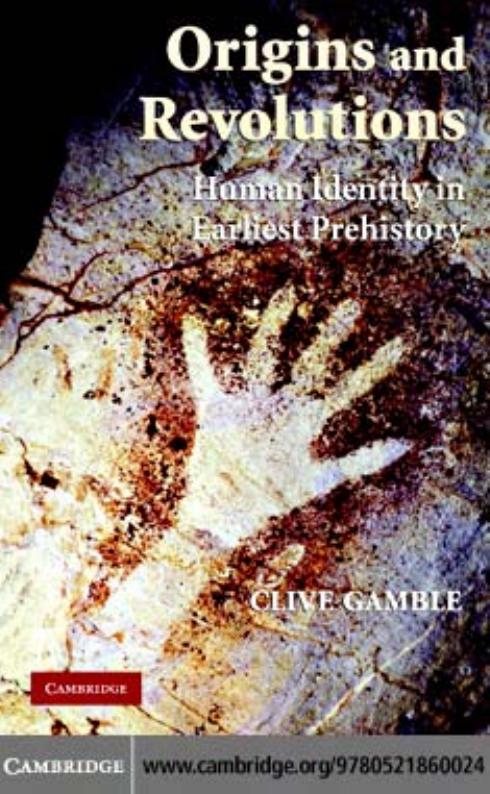Origins and Revolutions: Human Identity in Earliest Prehistory by Clive Gamble

Author:Clive Gamble [Gamble, Clive]
Language: eng
Format: epub, mobi, pdf
Publisher: Cambridge University Press
Published: 2007-03-26T00:00:00+00:00
For Clark, Foley and Lahr the Australian sequence indicates little beyond a Mode 3 technology even though the continent was first colonised when Mode 4 was widespread in the Old World. Their argument is that Mode 3 is a more reliable archaeological signature of Modern humans than Mode 4 since it can be found with them in Africa at 300,000 or Australia 60,000 years ago. Furthermore, Mode 3 was available to other species such as the Eurasian Neanderthals during this quarter of a million years which implies that the cognitive and evolutionary changes which began around 300,000 years ago in Africa and Eurasia had significant consequences for the social technologies of more than one hominin.
In Foley and Lahr's (1997:26) opinion ‘blades are regionally not globally important’. For them the later development of blades has more to do with the subsequent differentiation of groups through material culture and is not indicative of the first appearance of modern human behaviour (Foley 2001b:192). Consequently both prismatic and Levallois PCTs are widely cited as evidence for planning and anticipation (Table 7.8) that would be expected with modern human behaviour (Bar-Yosef 2002).
Table 7.8. Binford’s definitions of forward thinking associated with modern humans rather than Neanderthals, blade rather than flake PCTs (1989:19–20)
Download
Origins and Revolutions: Human Identity in Earliest Prehistory by Clive Gamble.mobi
Origins and Revolutions: Human Identity in Earliest Prehistory by Clive Gamble.pdf
This site does not store any files on its server. We only index and link to content provided by other sites. Please contact the content providers to delete copyright contents if any and email us, we'll remove relevant links or contents immediately.
| Africa | Americas |
| Arctic & Antarctica | Asia |
| Australia & Oceania | Europe |
| Middle East | Russia |
| United States | World |
| Ancient Civilizations | Military |
| Historical Study & Educational Resources |
The Daily Stoic by Holiday Ryan & Hanselman Stephen(3214)
The Fate of Rome: Climate, Disease, and the End of an Empire (The Princeton History of the Ancient World) by Kyle Harper(2988)
People of the Earth: An Introduction to World Prehistory by Dr. Brian Fagan & Nadia Durrani(2690)
Ancient Worlds by Michael Scott(2607)
Babylon's Ark by Lawrence Anthony(2570)
The Daily Stoic by Ryan Holiday & Stephen Hanselman(2443)
Foreign Devils on the Silk Road: The Search for the Lost Treasures of Central Asia by Peter Hopkirk(2422)
India's Ancient Past by R.S. Sharma(2406)
MOSES THE EGYPTIAN by Jan Assmann(2360)
The Complete Dead Sea Scrolls in English (7th Edition) (Penguin Classics) by Geza Vermes(2222)
Lost Technologies of Ancient Egypt by Christopher Dunn(2187)
The Earth Chronicles Handbook by Zecharia Sitchin(2167)
24 Hours in Ancient Rome by Philip Matyszak(2041)
Alexander the Great by Philip Freeman(2026)
Aztec by Gary Jennings(1965)
The Nine Waves of Creation by Carl Johan Calleman(1875)
Curse Tablets and Binding Spells from the Ancient World by Gager John G.;(1829)
Before Atlantis by Frank Joseph(1801)
Earthmare: The Lost Book of Wars by Cergat(1780)
